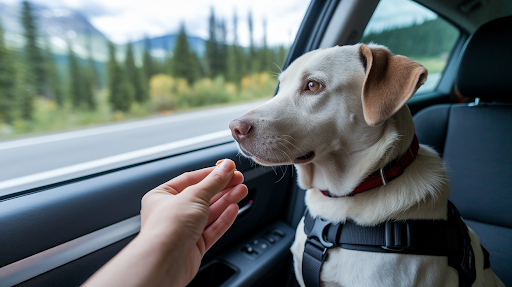Training Treats for Dogs: The Secret to a Well-Behaved Pup
When it comes to training your dog, the right treats can make all the difference. Whether you’re teaching basic commands, working on advanced tricks, or just trying to curb some naughty behavior, training treats for dogs are your best friend. But with so many options out there, how do you choose the best ones? And what makes a treat truly effective for training? Let’s dig into everything you need to know about training treats for dogs and how they can help you and your furry buddy.
Why Do Dogs Bark At Other Dogs?
Let’s face it—dogs love food. It’s their ultimate motivator. Training treats for dogs are specially designed to be small, tasty, and easy to carry, making them perfect for rewarding good behavior on the go. Unlike regular dog food or table scraps, these treats are packed with flavor to keep your pup’s attention during training sessions.
The key to successful training is positive reinforcement, and treats are the easiest way to reward your dog for doing something right. Whether it’s sitting on command, walking nicely on a leash, or mastering a new trick, a well-timed treat can reinforce the behavior and make your dog eager to learn more.
But not all treats are created equal. The best training treats for dogs are soft, bite-sized, and low in calories. After all, you’ll be giving out a lot of them during training, and you don’t want to overfeed your pup. Look for treats made with high-quality ingredients that are both delicious and nutritious.
What to Look for in Training Treats for Dogs?
Size Matters: Training treats should be small—think pea-sized. This makes it easy for your dog to eat quickly, so you can keep the training session moving without interruptions.
Soft and Chewy: Hard treats take longer to eat and can distract your dog from the task at hand. Soft treats are easier to chew and swallow, making them ideal for training.
High-Value Rewards: For tougher training tasks or distractions, you’ll want a treat that’s extra enticing. High-value treats, like those made with real meat or cheese, can be a game-changer when you need your dog’s full attention.
Healthy Ingredients: Since you’ll be giving your dog a lot of treats during training, it’s important to choose options that are low in calories and free from artificial additives. Look for treats with natural ingredients and no fillers.
Portability: If you’re out on a walk or hiking with your dog, you’ll want treats that are easy to carry. Resealable bags or treat pouches that clip onto your belt are a great option.
How to Use Training Treats for Dogs Effectively?
Now that you’ve got the perfect training treats for dogs, it’s time to put them to work! Training your pup can be a fun and rewarding experience, but it’s important to use treats strategically to get the best results. Here’s a deeper dive into how to use training treats effectively to help your dog learn faster and stay motivated.
Timing is Everything
When it comes to training, timing is everything. Dogs live in the moment, so if you wait too long to reward them, they might not connect the treat to the behavior you’re trying to reinforce. For example, if you’re teaching your dog to sit, give them the treat the second their bottom hits the ground. This instant reward helps them understand exactly what they’re being praised for.
Keep It Short and Sweet
Dogs have short attention spans, especially when they’re young or easily distracted. Long training sessions can lead to frustration—for both you and your pup. Instead, aim for short, focused sessions of about 5 to 10 minutes. This keeps your dog engaged and eager to learn.
Use Treats for Real-Life Situations
Training isn’t just for formal sessions in your living room or backyard. You can use treats to reinforce good behavior in everyday situations, too. For example:
Walking on a Leash: Reward your dog for walking calmly beside you instead of pulling.
Greeting Visitors: Give your pup a treat for sitting politely when someone comes to the door.
Car Rides: Use treats to help your dog stay calm and relaxed in the car.
These real-life training moments are just as important as structured sessions. They help your dog generalize their training, meaning they’ll understand that the rules apply everywhere—not just during “training time.”
Don’t Overdo It
While treats are a great tool, it’s important not to overdo it. Too many treats can lead to weight gain or digestive issues, especially if you’re using high-calorie options. To avoid this, choose low-calorie training treats and adjust your dog’s regular meals to account for the extra calories they’re getting from training.
How Often Can You Give Dogs Treats?
Treats are a great way to reward your dog, but moderation is key. As a general rule, treats should make up no more than 10% of your dog’s daily calorie intake. This ensures your pup gets the nutrition they need from their regular meals without packing on extra pounds.
For example, if your dog eats 500 calories a day, only about 50 calories should come from treats. Always check the calorie count on the treat packaging and adjust accordingly. If you’re using treats for training, opt for small, low-calorie options so you can reward your dog frequently without overfeeding them.
Treats are a wonderful way to show your dog some love, but it’s important to choose the right ones and use them in moderation. Whether you have a playful puppy, an energetic adult dog, or a wise senior, there are plenty of healthy options to keep your pup happy and healthy.



